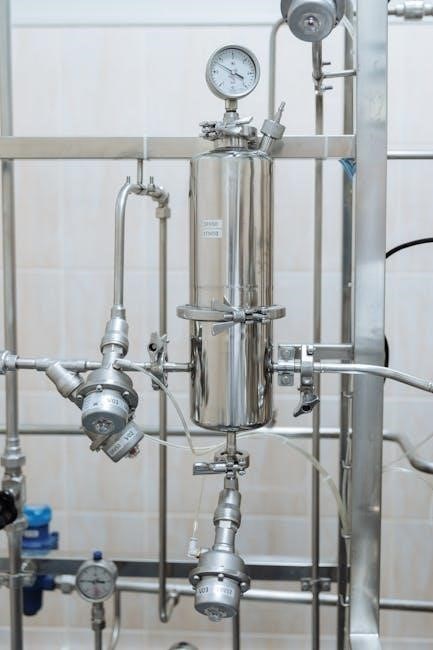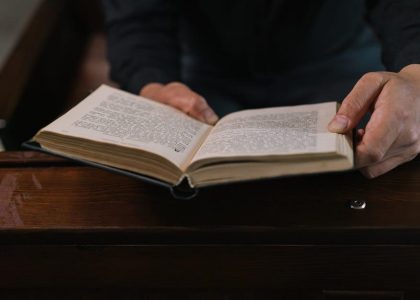This metal roofing installation guide provides general design guidance and application instructions for proper installation of metal roofing products, including suggested details and safety considerations for installers to follow carefully always.
Purpose of the Guide
The purpose of this guide is to provide installers with a comprehensive resource for installing metal roofing products, including information on safety considerations, product characteristics, and installation best practices.
The guide is intended to help installers ensure that metal roofing products are installed correctly and safely, and to provide a resource for troubleshooting common installation issues.
The guide covers a range of topics related to metal roofing installation, including preparation of the roof deck, installation of roofing panels, and flashing and trimming details.
By following the guidelines and recommendations outlined in this guide, installers can help ensure that metal roofing products are installed to provide long-lasting performance and durability.
The guide is an essential resource for anyone involved in the installation of metal roofing products, including installers, contractors, and building owners.
The guide is designed to be used in conjunction with other resources, including manufacturer instructions and local building codes, to ensure that metal roofing products are installed in compliance with all relevant regulations and standards.
Overall, the purpose of this guide is to provide a comprehensive and authoritative resource for the installation of metal roofing products.
Importance of Proper Installation
Proper installation of metal roofing products is crucial to ensure the longevity and performance of the roof.
A well-installed metal roof can provide decades of trouble-free service, while a poorly installed roof can lead to premature failure and costly repairs.
The importance of proper installation cannot be overstated, as it directly affects the safety, durability, and energy efficiency of the building.
Improper installation can result in leaks, damage to the building structure, and increased energy costs.
Furthermore, a properly installed metal roof can also enhance the appearance and value of the building.
The installation process requires careful attention to detail, adherence to manufacturer instructions, and compliance with local building codes and regulations.
By prioritizing proper installation, building owners and installers can ensure that metal roofing products perform as intended and provide a safe and durable covering for the building.
Proper installation is essential to realizing the full benefits of metal roofing products, including their durability, sustainability, and energy efficiency.
It is essential to follow established guidelines and best practices to ensure a successful installation.

Preparing the Roof for Installation
Roofer must ensure the roof surface is clean and clear of debris before installing metal roofing products carefully always.
Step 1: Ensure a Clean Surface
To ensure a clean surface for metal roofing installation, the roofer must remove all debris, dirt, and old roofing materials from the roof deck. This includes nails, screws, and any other objects that may be protruding from the surface. A clean surface is essential for a successful installation, as any debris or obstacles can interfere with the proper seating of the metal roofing panels. The roofer should also inspect the roof deck for any damage or rot, and make any necessary repairs before proceeding with the installation. Additionally, the roof deck should be dry and free of any moisture, as this can also affect the installation process. By taking the time to ensure a clean surface, the roofer can help ensure a smooth and successful metal roofing installation. The surface should be inspected carefully to ensure it is ready for the installation of the metal roofing panels.
Step 2: Check for Protruding Objects
Checking for protruding objects is a crucial step in the metal roofing installation process. The roofer must inspect the roof deck for any objects that may be protruding from the surface, such as nails, screws, or pipes! This is important because protruding objects can interfere with the proper installation of the metal roofing panels and cause damage to the roof. The roofer should check the entire roof deck, including the edges and corners, to ensure that all protruding objects are removed or properly secured. This step helps to prevent any potential hazards or obstacles that could affect the installation process. By checking for protruding objects, the roofer can help ensure a safe and successful installation. The roofer should use a checklist to ensure that all areas of the roof deck have been inspected and that all protruding objects have been removed or secured. This step is essential for a proper metal roofing installation.

Safety Considerations for Metal Roofing Installation
Metal roofing installation requires careful safety considerations always during installation processes with safety equipment.
Personal Protective Equipment

Installers should wear personal protective equipment to prevent injuries during metal roofing installation, including safety rope and harness, hand protection, eye protection, hearing protection, and soft rubber soled shoes to ensure traction on the roof.
The use of this equipment is crucial to prevent falls and other accidents that can occur during the installation process.
Additionally, installers should be aware of the potential hazards associated with metal roofing, such as sharp edges and slippery surfaces, and take necessary precautions to avoid them.
By wearing the appropriate personal protective equipment, installers can minimize the risk of injury and ensure a safe working environment.
It is also important to follow the manufacturer’s instructions for the use and maintenance of the equipment to ensure its effectiveness.
Proper training and supervision are also essential to ensure that installers are aware of the potential hazards and know how to use the equipment correctly.
Overall, the use of personal protective equipment is an essential aspect of metal roofing installation and should not be overlooked.
The safety of the installers should always be the top priority, and by taking the necessary precautions, they can ensure a safe and successful installation.
Metal roofing installation requires careful planning and attention to detail to ensure a safe working environment.
Safety Hazards Associated with Metal Roofing
Metal roofing installation poses several safety hazards, including steep roof pitches, slippery surfaces, and sharp edges, which can cause falls and injuries;
The risk of accidents is higher when working on roofs with very steep pitches, and extreme care should be taken to ensure a safe working environment.
Installers should be aware of the potential hazards associated with metal roofing and take necessary precautions to avoid them.
The metal roofing surface can be extremely slick, especially when wet, and does not provide firm footing, making it essential to use safety equipment and follow proper installation procedures.
Additionally, the use of power tools and equipment can also pose safety risks, and installers should follow the manufacturer’s instructions for their use and maintenance.
By being aware of the potential safety hazards and taking necessary precautions, installers can minimize the risk of accidents and ensure a safe working environment.
Proper training and supervision are also essential to ensure that installers are aware of the potential hazards and know how to mitigate them.
Metal roofing installation requires careful planning and attention to detail to ensure a safe working environment and prevent accidents.
The safety of the installers should always be the top priority.

Metal Roofing Products and Their Characteristics
Metal roofing products offer durability and versatility with various styles and materials available for installation purposes always.
Grand Rib-3 Panels
Grand Rib-3 panels are a popular choice for metal roofing installation due to their strength, durability, and economic benefits. These panels are designed to meet the growing demand for metal roofing needs of homes, businesses, and agricultural buildings. They are a strong and attractive answer to roofing needs, offering a reliable and long-lasting solution. The Grand Rib-3 panel is a multi-purpose panel that can be used for various applications, including residential, commercial, and agricultural buildings. It is designed to provide a weather-tight seal and can be installed over a continuous rigid substrate or spaced supports. The panel’s ribbed design provides added strength and stability, making it an ideal choice for areas with high winds or heavy rainfall. Overall, Grand Rib-3 panels are a versatile and reliable option for metal roofing installation, offering a range of benefits and advantages for builders and homeowners. They are widely available and can be easily installed by professional contractors or experienced DIYers.
Classic Rib Panels
Classic Rib panels are a traditional and timeless choice for metal roofing installation, offering a simple yet effective design. These panels are designed to provide a weather-tight seal and can be installed over a continuous rigid substrate or spaced supports. The Classic Rib panel is a popular choice for residential and commercial buildings, due to its ease of installation and economical benefits. The panel’s ribbed design provides added strength and stability, making it an ideal choice for areas with moderate winds and rainfall. Classic Rib panels are also a versatile option, available in a range of colors and finishes to suit various architectural styles. They are widely available and can be easily installed by professional contractors or experienced DIYers. The Classic Rib panel is a reliable and long-lasting solution for metal roofing needs, providing a durable and low-maintenance option for builders and homeowners. Overall, Classic Rib panels are a classic choice for metal roofing installation, offering a range of benefits and advantages.





